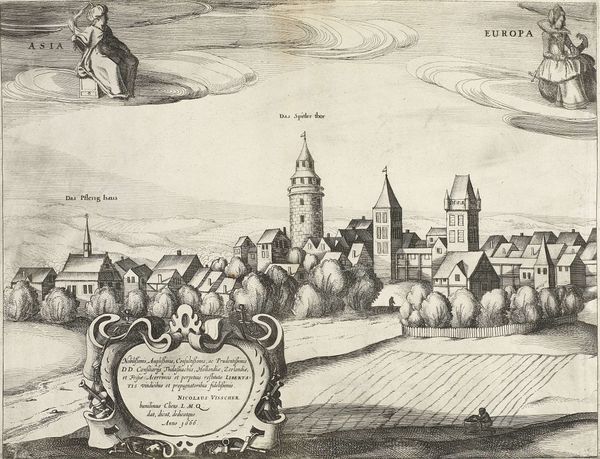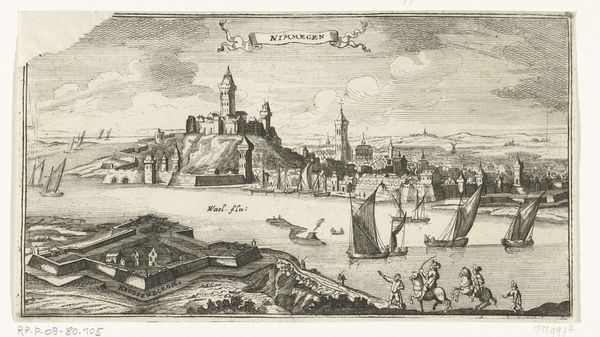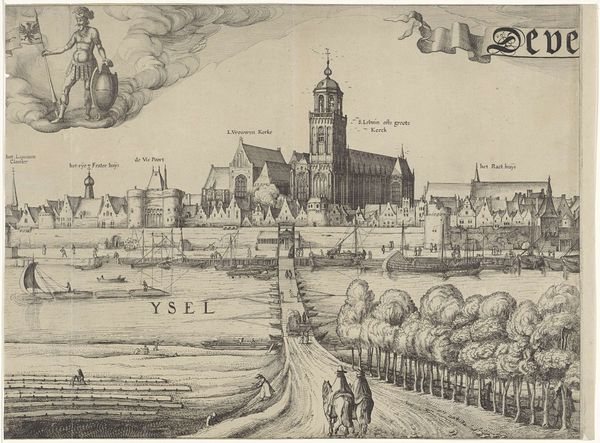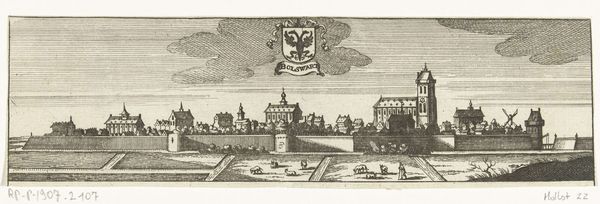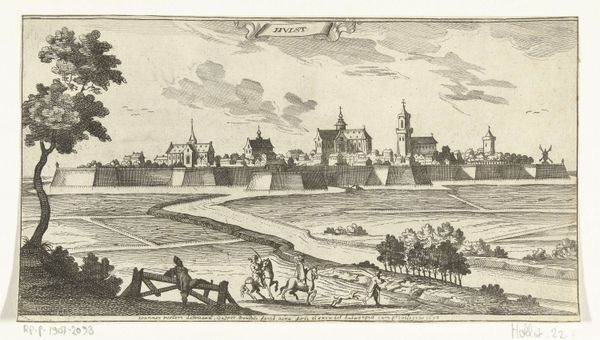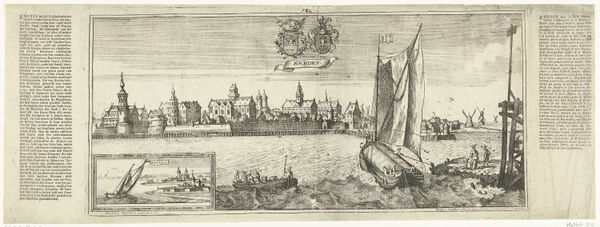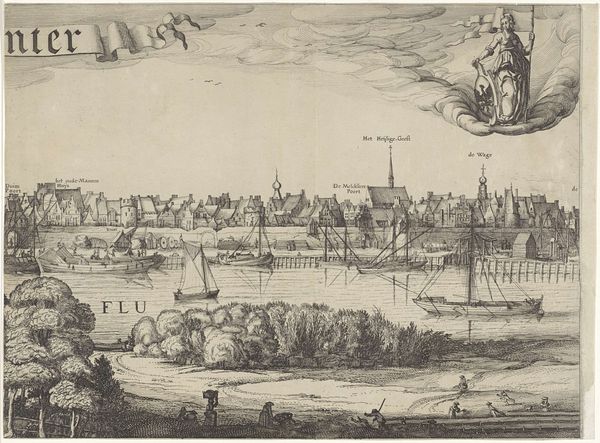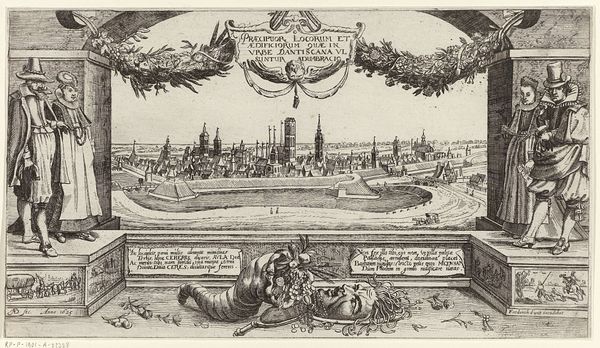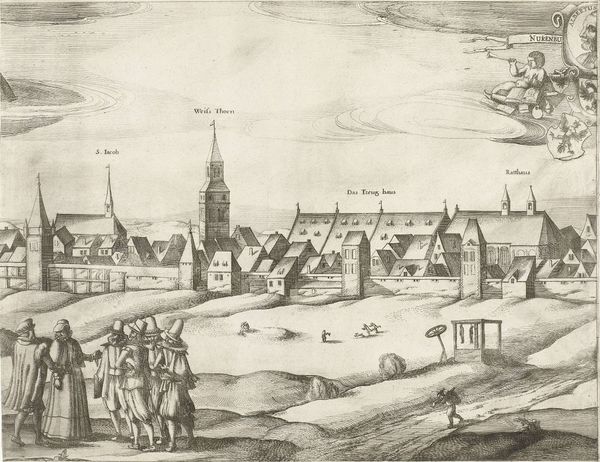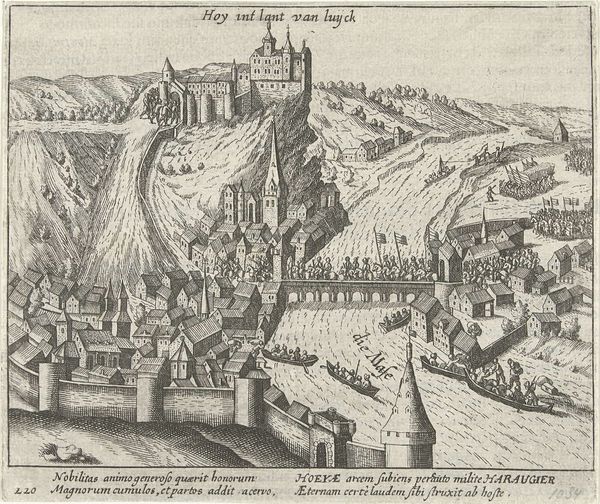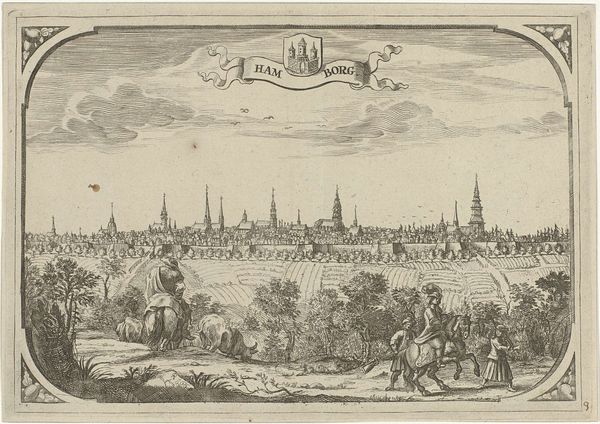
print, engraving
# print
#
landscape
#
cityscape
#
engraving
Dimensions: height 406 mm, width 520 mm
Copyright: Rijks Museum: Open Domain
Curator: Here we have "Gezicht op Neurenberg (blad 2)," or "View of Nuremberg (sheet 2)," an engraving dating back to 1666. It resides here with us at the Rijksmuseum, created by Dirk Eversen Lons. What's your immediate take on it? Editor: Bleak, somehow…but orderly! The crisp lines make it seem like Nuremberg’s being presented as a model city, yet there’s this unsettling, almost ghostly stillness to it. It feels less like a celebration and more like a…documentation? Curator: An interesting observation. The engraving medium itself lends to that crispness and detail. Printmaking at this time was booming in the Netherlands, and views of cities were quite popular, fulfilling desires for knowledge and also civic pride. Prints circulated widely and influenced how people imagined cities, even those they hadn't seen. Notice also the figures in the upper corners, above the town, what do you make of that? Editor: Whoa, I didn't even spot those at first! Africa and America are literally floating in the sky over Nuremberg like guardian spirits—or maybe just decorations on a particularly elaborate cake! Curator: More than decoration, I suspect. Representing continents alongside the city serves to magnify Nuremberg’s place in a larger world, or at least a worldview. By associating it with the known continents, the artist is connecting the city to broader themes of trade, exploration, and the flow of knowledge. Editor: You know, now I'm noticing this decorative cartouche too. At first it felt kind of tacked on, but it's all part of framing Nuremberg as… important, cultured, connected. But it does feel forced, like propaganda in pretty clothes. I get this urge to see the grittier truth! Curator: Well, perhaps the art wasn't striving for grit in the first place, but order. Keep in mind that artists responded to market demands. Editor: I suppose. I see it, that structured world…but give me chaos! Though, in its own way, the careful control in the rendering makes you ponder what's being left out of the view. Food for thought! Curator: Precisely. It is through these controlled images that the socio-political influences become visible. That is where our interpretation has an interesting role to play!
Comments
No comments
Be the first to comment and join the conversation on the ultimate creative platform.
